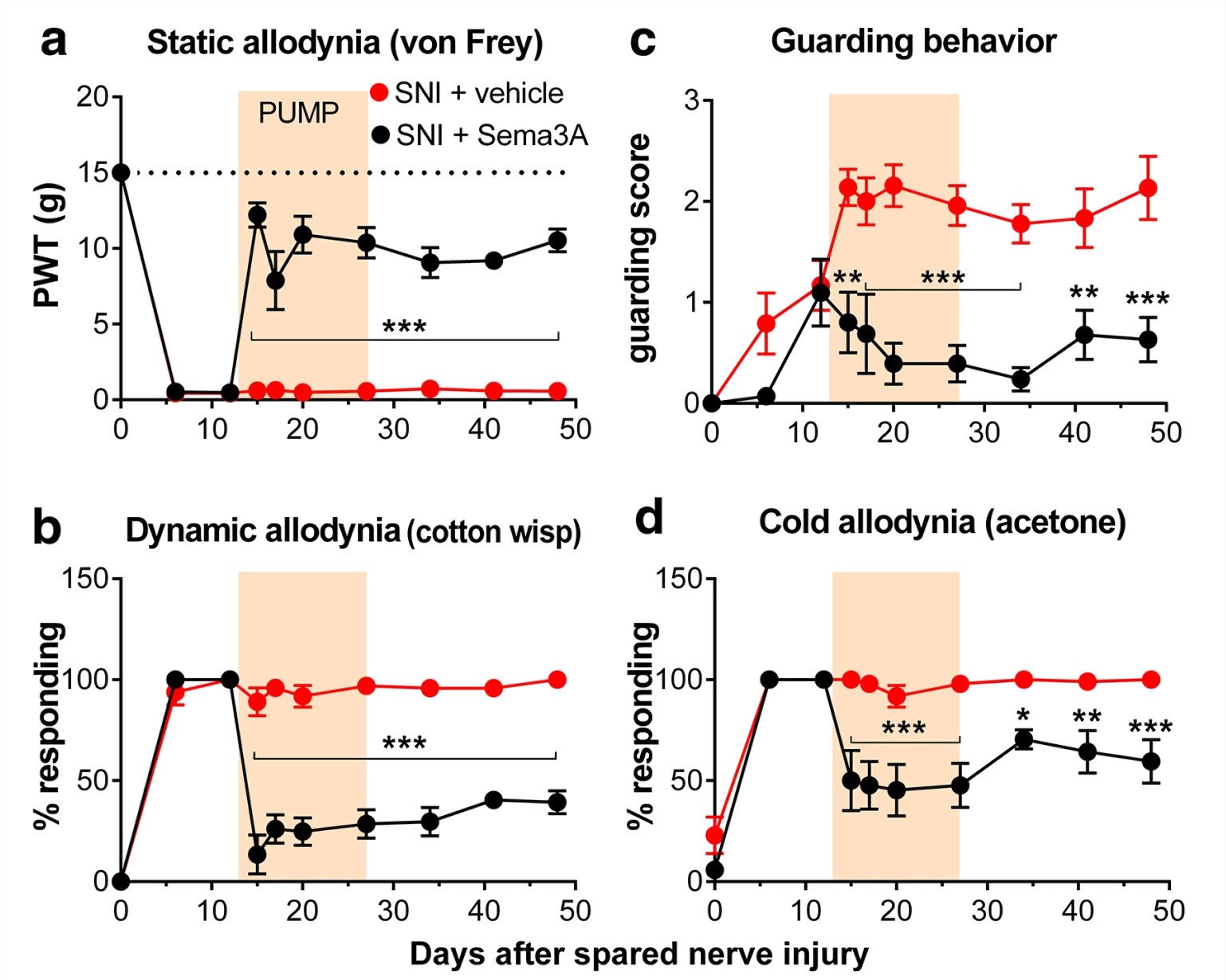Spinal Nerve Ligation (SNL) Rat Model
Creative Biolabs offers three models of neuropathic pain in the rat that are widely used: the chronic constriction injury (CCI) model, the partial sciatic ligation (PSL) model, and the spinal nerve ligation (SNL) model. These models are crucial in the screening and evaluation of analgesics. Especially, SNL is a popular model of the peripheral nerve injury that produces incomplete denervation of the sciatic nerve sensory territory through selective damage of a subset of spinal nerves forming the sciatic nerve.
Introduction of SNL Rat Model
Since its introduction in 1992, the SNL model of neuropathic pain has been widely used for various investigative works on neuropathic pain mechanisms as well as in screening tests for the development of new analgesic drugs. This model can be developed by tightly ligating the L5 and L6 segmental spinal nerves in the rat.
Briefly, rats are anesthetized and placed in the prone position to shave the lower back. Thereafter, a 2-cm long incision is made at the level of the posterior iliac crest to access the left lumbar spinal nerves. L5 and L6 spinal nerves are identified and carefully dissected free from the adjacent L4 spinal nerve, and then, tightly ligated distal to the dorsal root ganglia (DRG) using 6-0 silk suture. The operation results in long-lasting behavioral alterations such as mechanical allodynia, heat hyperalgesia, cold allodynia, and ongoing pain.
Features of STZ-Induced Diabetic Neuropathy Model
- The neuropathic pain symptoms generated in SNL model mimic the symptoms of human patients suffering from causalgia, developed after an injury to the peripheral nerves.
- Uninjured afferent axons of the sciatic nerve of this model are accessible via the 4th lumbar dorsal root.
- Compared to CCI and PSL models, the ligation site and extent of ligation are more consistent in this model.
- In this model, there is an advantage of having separate injured and intact spinal segments.
- SNL model has been the model of choice when a large and stable magnitude of pain behavior is required.
Assessments
Creative Biolabs utilizes many behavioral assays to quantify the resulting neuropathic pain symptoms. Firstly, the heat-hyperalgesia can be assessed with the paw-flick test, whose primary outcome measure is the mean withdrawal latency of the hind paw. Alternatively, the Hargreaves test can also be applied. For mechano-hyperalgesia assessment, the pin-prick test can be used to record the duration of the withdrawal. Besides, mechano-allodynia can be assessed using von Frey fibers and the cold allodynia can be measured using the acetone drop test. Cognitive tests such as Morris water maze can be conducted as well. Briefly, Creative Biolabs provides assessments including but not limited to:
- Thermal hyperalgesia (Paw-flick test; Hargreaves test)
- Mechanical hyperalgesia (Randall-Selitto paw pressure test; Pin Prick test)
- Mechano-tactile allodynia (Von Frey hair test)
- Cold allodynia (the acetone test)
- Motor nerve conduction velocity (MNCV)
- Behavioral tests for motor function, cognitive function
- Immunohistochemistry and histology
 Fig. 1 Applying semaphorin 3A to the injury site reduces established pain in the spared nerve injury model. (Xie et al. 2017)1, 2
Fig. 1 Applying semaphorin 3A to the injury site reduces established pain in the spared nerve injury model. (Xie et al. 2017)1, 2
Meantime, Creative Biolabs offers other pain models to study different pain-related conditions and to evaluate the analgesic activity of novel drugs:
- Carrageenan-Induced Paw Edema
- Adjuvant-Induced Arthritis (AIA) Rodent Model
- Monosodium Iodoacetate (MIA)-Induced Osteoarthritis Model
- Formalin-induced Pain Model
- Streptozotocin (STZ)-Induced Diabetic Neuropathy Model
- Partial Sciatic Nerve Ligation (PSL) Rat Model
- Chronic Constriction Injury (CCI) Model
- Vincristine-Induced Neuropathy Model
Creative Biolabs has focused on rodent models of pain studies for years, enabling us to provide strong expertise and guidance in the preclinical pharmacology and efficacy area. Our goal is to promote excellence in our research and helps meet our clients' needs in a timely, efficient, cost-effective and high-quality manner.
Besides, the comprehensive list of rodent neurological disease models is placed below for your review. Please click the links for more detailed description of each model:
For more information please contact us or send us an inquiry below.
References
- Xie, W.; et al. Active nerve regeneration with failed target reinnervation drives persistent neuropathic pain[J]. Eneuro. 2017, 4(1):ENEURO.0008-17.2017.
- under Open Access license CC BY 4.0, without modification.
For Research Use Only.
